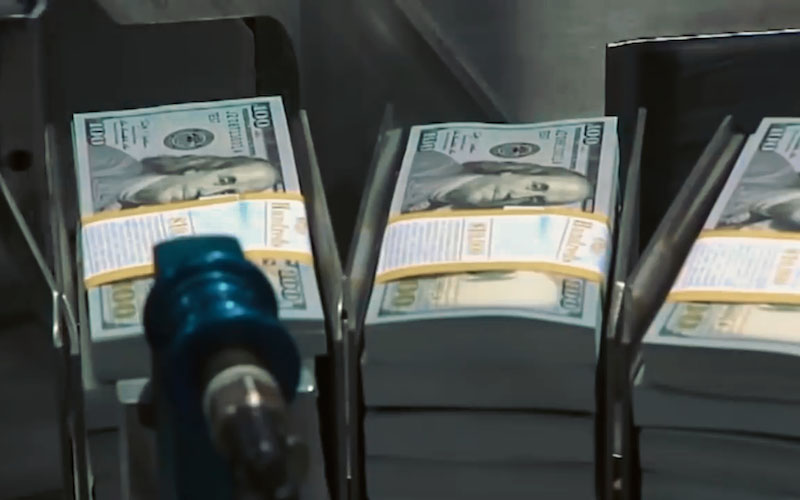The US dollar has risen for five consecutive days, hitting the 100 mark! The Australian dollar is mired in difficulties, but a rebound is brewing?
2025-11-04 09:38:35

Following the Federal Reserve's unexpectedly hawkish stance on interest rate cuts last week, upcoming data will shape market expectations for the December policy meeting. Currently, federal funds futures contracts indicate a 67% probability of a rate cut—while still reflecting market confidence in further easing, this is a significant drop from the approximately 90% probability before last week's FOMC meeting. The performance of subsequent US data will directly determine the direction of the US dollar by influencing traders' confidence in a December rate cut.
Technical Analysis of the US Dollar Index
Given that the US will release key economic data this week, caution is advised – this means the dollar index may fluctuate this week.
Both the weekly and daily RSI (14) indicators confirm that the current upward trend is intact and neither has entered the overbought zone. Therefore, the US dollar index may still test the 101 level before completing the C wave correction.
However, if this week's data is weak, the market may quickly reassess its expectations for a Fed rate cut, thereby dragging the dollar down.
The risks have not subsided. The US government shutdown has entered its sixth week, nearing the longest in history, with Republicans and Democrats remaining deadlocked in budget negotiations. Investors worry that this political impasse could weaken US economic activity, thereby eroding support for the US dollar. This could provide support for the Australian dollar—especially if the Reserve Bank of Australia signals a hawkish stance while keeping interest rates unchanged.

(US Dollar Index Daily Chart, Source: FX678)
AUD/USD Technical Analysis: Yield Spreads and Option Positions Suggest Limited Downside for the Australian Dollar
The correlation between Australian government bond yields and options market positions suggests that the Australian dollar's pullback may be limited. Two-year Australian bond yields have continued to rise, and the two-year AUD/USD yield spread has widened significantly ahead of the Australian dollar exchange rate.
Although the implied volatility of 1-day options against the US dollar rose to a three-day high, the implied volatility of 1-week and 1-month options remained at moderate levels. Furthermore, risk reversal indicators suggest that demand for call options (long positions) remains robust relative to demand for put options (short positions).
The Australian dollar has formed a rickshaw doji on the daily chart against the US dollar, suggesting weakening downward momentum.
Despite the Australian dollar's fourth consecutive day of decline, the rickshaw doji candlestick pattern suggests that bearish momentum is waning. Monday's low (0.6517) held above the September low (0.6483), highlighting initial support. Given the possibility of the Reserve Bank of Australia adopting a hawkish stance and holding rates steady, the Australian dollar may see a short-term rebound against the US dollar, while the US dollar is expected to experience a slight pullback.
However, based on the overall assessment that the US dollar will continue to strengthen before the completion of wave C, any recovery in the Australian dollar may be limited after the initial rebound.

(AUD/USD daily chart, source: FX678)
At 9:37 Beijing time, the Australian dollar was trading at 0.6531/32 against the US dollar.
- Risk Warning and Disclaimer
- The market involves risk, and trading may not be suitable for all investors. This article is for reference only and does not constitute personal investment advice, nor does it take into account certain users’ specific investment objectives, financial situation, or other needs. Any investment decisions made based on this information are at your own risk.





















